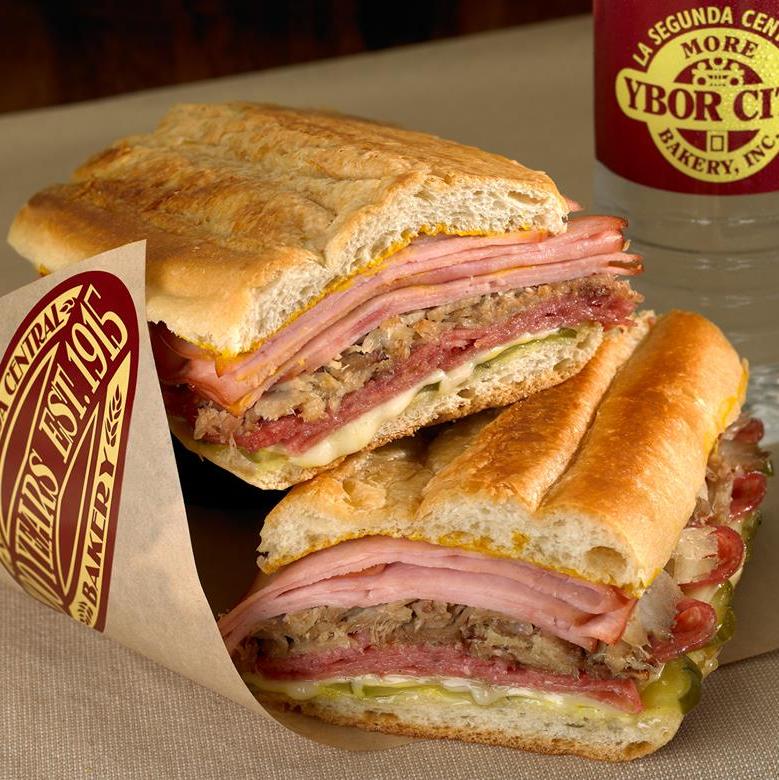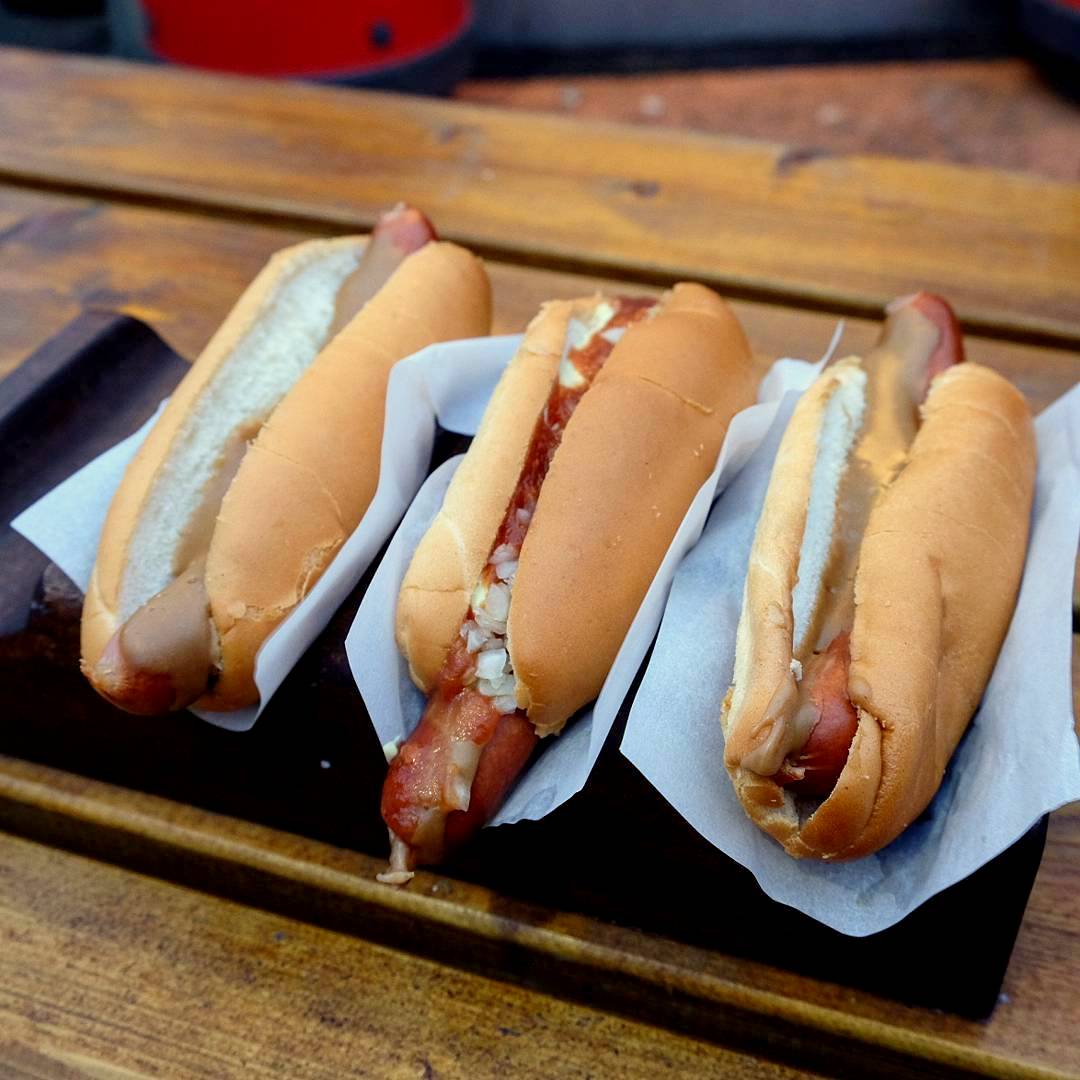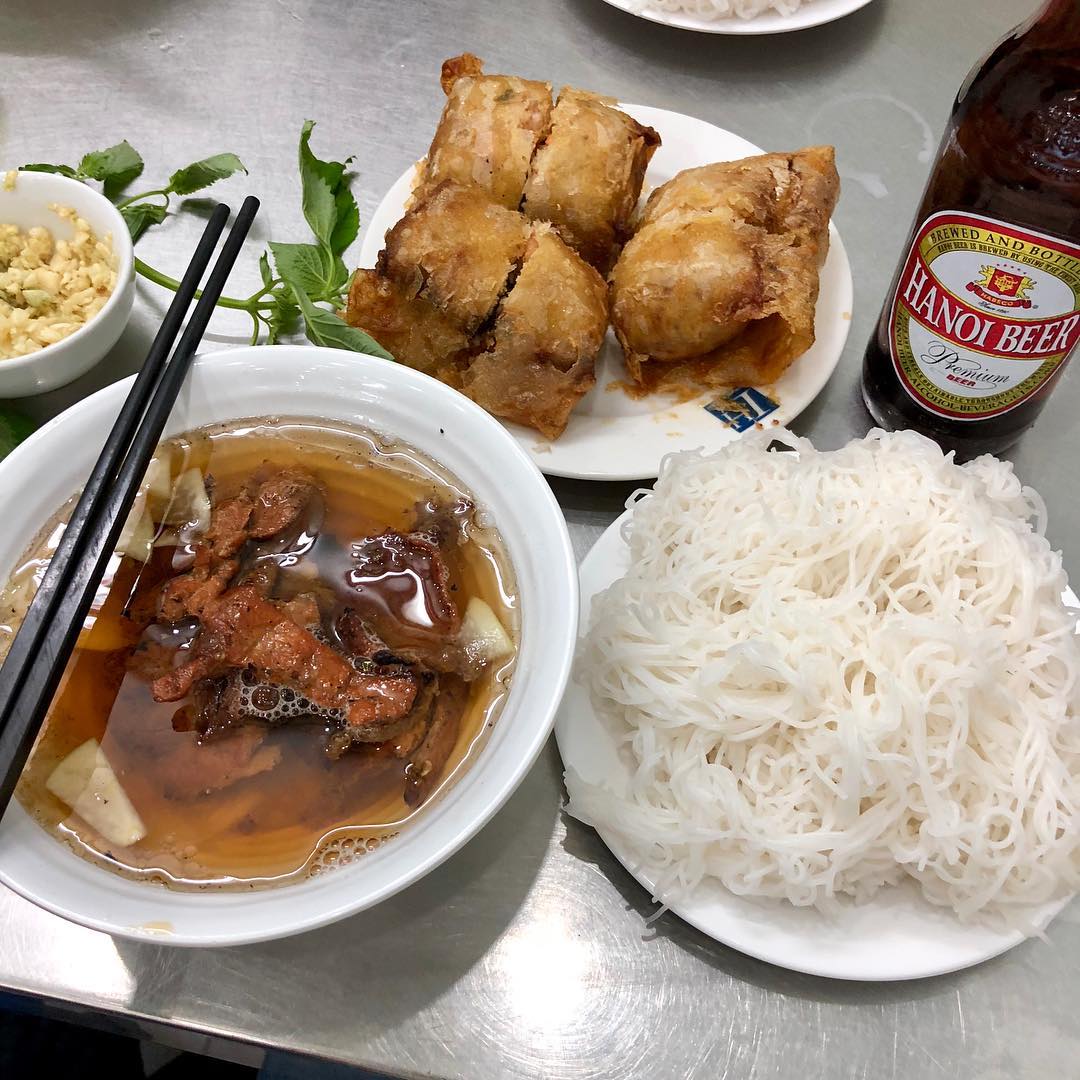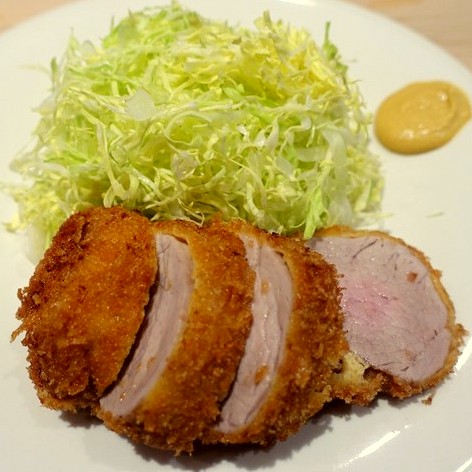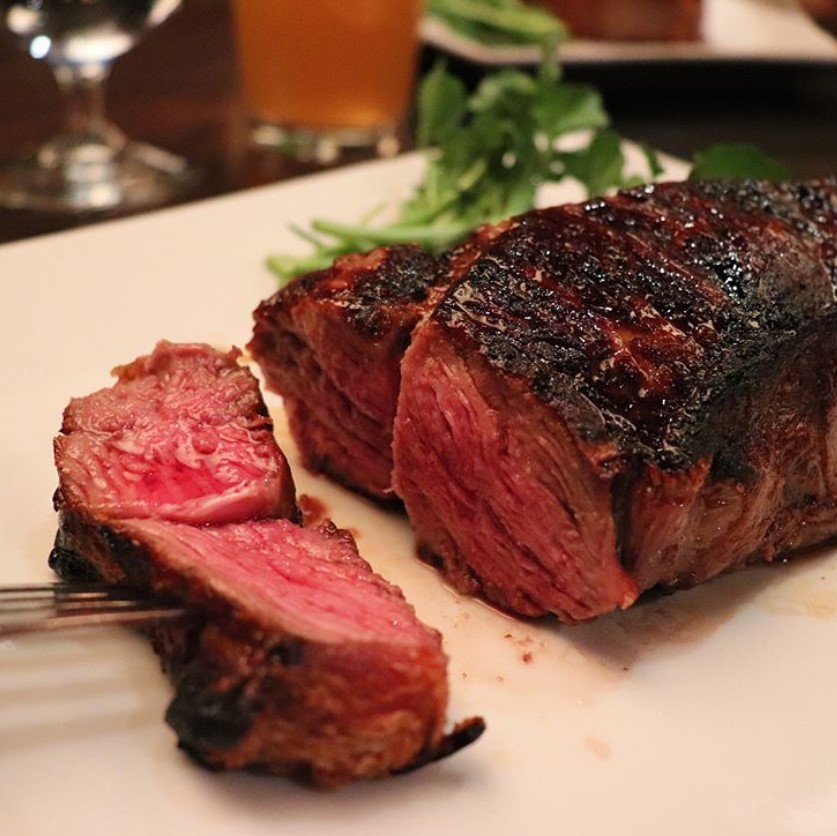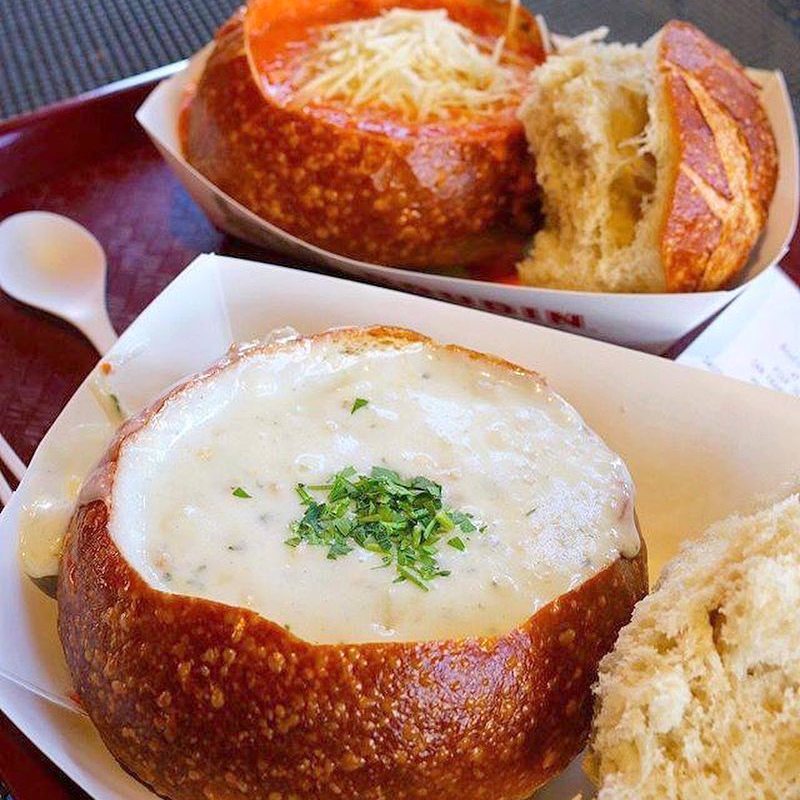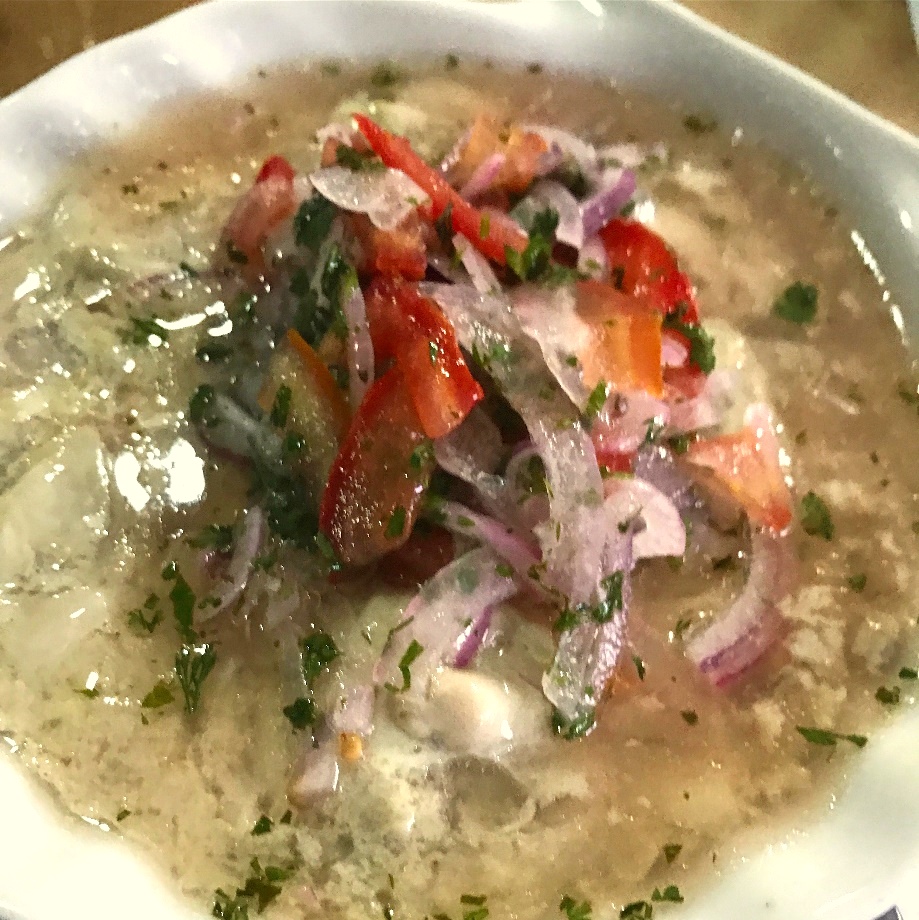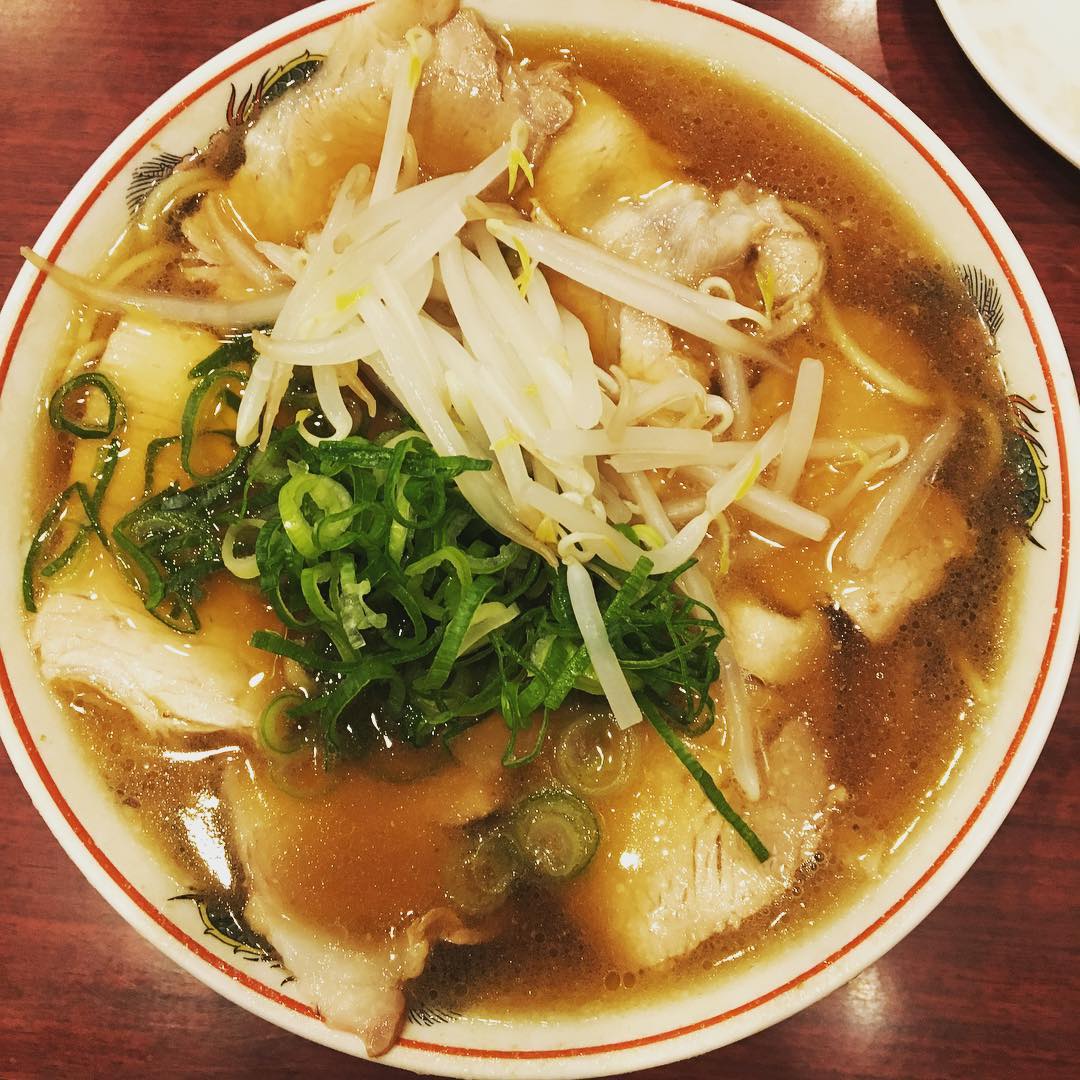Spanish soldier Juan Moré discovered an authentic recipe for his favorite bread while fighting the Spanish-American war in Cuba. After the war, Moré settled in Ybor City in `95. Armed with the recipe, he opened La Segunda Central Bakery in Tampa’s historic district. The bakery quickly became famous for its traditional, three-foot-long loaves of Cuban bread. Each loaf is baked with a long fresh strip of palmetto leaf down the middle to form the split. The outside turns crisp and lightly brown, while the inside becomes pillowy white. Diners pack the storefront bakery and deli for steaming cups of café con leche, guava-filled pastries and breakfast sandwiches on freshly baked bread. But if you're looking for the ultimate taste of Cuba, order the Cuban sandwich. Hot and pressed, it comes loaded with mojo marinated pork, smoked ham, Genoa salami, Swiss cheese, pickle and special sauce on Cuban bread.
Since 1937, Bæjarins Beztu Pylsur (which translates to “the best hot dogs in town”) has been serving what some call the world's greatest hot dog. Just look for the lines in front of the red and white caravan down by Reykjavik’s harbour. Their Icelandic hot dogs are a blend of pork, beef and organic, grass-fed lamb, which deepens its flavour. The links are braised in beer until the casing achieves the perfect snap. Cradled in a fluffy white bun, the steaming meat is sprinkled with cronions, a combination of raw and crispy, crunchy fried onions. Eat it as is, or choose from ketchup made with apples, lightly spiced mustard and a remoulade of mayonnaise, pickles and capers.
Bun cha, a Vietnamese dish of grilled pork and noodle, is thought to have originated from Hanoi. Bun cha is served with grilled fatty pork over a plate of white rice noodle and herbs with a side dish of dipping sauce. In 2016, Anthony Bourdain and former U.S. President Barack Obama enjoyed grilled pork and rice noodles at Bún chả Hương Liên, a restaurant known for its reasonably priced (and delicious) cuisine. That historic dining moment aired during the season eight premiere of Bourdain's show "Parts Unknown." Since then, Bún chả Hương Liên has become known to people in and outside of Hanoi as “that place where Anthony Bourdain ate with Barack Obama in Vietnam.” To memorialize their visit, Bún Chả Hương Liên has turned their table into a museum. The table is set with clean dishes and chopsticks arranged similarly to the way the former U.S. President and the celebrity chef had them, and even includes two bottles of the exact beer the duo drank during their meeting. While guests can no longer sit at the table, as it is now encased in glass, they can order a new menu item called “Suat an Obama,” which translates to "Order like Obama." The meal features crab cha gio spring rolls and bun cha noodles. And it even comes with a bottle of local Hanoi Beer.
Kakigori is big in Japan with lines of up to 3 hours during the summer. Foreigners will imagine the shabby snow cones and ice slushes from the USA or the sickly sweet shaved ice from Hawaii - but - this is another level. These sweet ice towers are made from "Gourmet" ice blocks frozen with ultra fine water and maintained at precise temperatures. The ice masters are highly skilled as they endeavour to sculpt these delicate creations that would crumble like Jenga towers in the hands of amateurs. This masterpiece in Kyoto is possibly the single finest example of the art of Kakigori anywhere and ranks as one of the great sweet creations in any culture. It would be worth a trip to Kyoto only to try this mind-boggling work of culinary art.
French chef Yves Camdeborde is widely recognized as the pioneer of the neo-bistro, a concept he created in the ’90s to make haute cuisine more accessible to diners. Dubbed the chef of "bistronomy,” in 1995, he opened his Art Deco restaurant in the 17th-century Hôtel Le Relais Saint-Germain, where he expertly toes the line between bistro and neo-bistro. During lunch, the Comptoir is a simple brasserie; in the evenings, however, the 20-seat restaurant becomes a temple to Camdeborde’s philosophy of elevating classic bistro dishes. One of Paris’ toughest reservations, there is no dinner menu. Diners eat whatever inventive, abundantly fresh, elevated bistro dishes Camdeborde chooses to cook that evening. The five-course prix fixe may feature haute cuisine versions of croque monsieur, salade niçoise, steak-frites or rolled saddle of lamb with vegetable-stuffed “Basque ravioli.” Camdeborde cooks brasserie fare from noon to 6 p.m. and on weekend nights, and his five-course prix fixe feast on weekday evenings. The catch? Dinner is booked as much as six months in advance.
Chef Mitsuro Sato is dedicated to a single category of Japanese cuisine: tonkatsu (deep-fried pork cutlet). Following in his father’s footsteps, Sato is the second-generation owner of Tonkatsu Sugita, a restaurant in Kuramae with a history spanning more than four decades. Many believe Sato serves the best tonkatsu in Tokyo, because he thinly cuts fresh domestic pork loin, painstakingly prepared for each patron, and then fries it in specially imported lard from Holland that gives the dish its signature mouth-watering aroma and taste. Sato’s finely honed techniques entertain those seated at the main counter. Pork loins and fillets are shifted back and forth between two lustrous copper pots – maintained at different temperatures – until the meat turns a delightful golden brown. It is well worth the 30-minute wait in line. Served with a bed of shredded cabbage, the cutlet’s combination of crispy crust and juicy pork will make you want to savour every bite.
Two German brothers opened the Old Homestead in the heart of the meatpacking district in 1868 – making it one of the longest continually serving restaurants in the USA. The iconic restaurant is legendary for its melt-in-your-mouth prime-aged USDA Texas-size slabs of beef. Whether it is the signature sirloin, porterhouse or filet mignon, the tender steaks arrive broiled with butter, ladled with au jus and accompanied by an entire head of roasted garlic caramelized like candy. Third-generation owners Greg and Marc Sherry maintain a close relationship with many of the area’s meat packers, who allow them to select the finest cuts of beef each day. Steaks are aged at least 28 days in the restaurant’s warehouse before being served. Claim to fame: The owners say the restaurant originated the Doggy Bag because their steaks were so large people needed a vessel to take it home. For carnivorous bliss, just look for the giant cow perched out front.
The history of sourdough bread in San Francisco goes way back to the time of the California gold rush when Basque migrants started baking bread in the area using the natural yeasts and bacteria present in the air for fermentation. San Francisco’s fog, called “Lactobacillus San Francisco,” mixes with the dough and creates a natural starter to give the bread its unique tang. For an authentic taste of culinary history, head to San Francisco’s oldest sourdough producers, Boudin Bakery near Fisherman’s Wharf. Opened by a family of master bakers from France, Boudin Bakery uses the same mother dough it developed in 1849.
Pro tip: Order the soup du jour in a sourdough bowl.
This oyster ceviche at “The King of Oysters” stands alongside Chez Wong in Lima and Encebollados Gato in Quito as the finest ceviches in the world. Located in Duran, a small town outside the port city of Guayaquil in Ecuador, locals pack the small, casual restaurant for its speciality: freshly shucked mollusks cured in lime juice and spiced with ají, chopped onions, salt and cilantro. In addition to the freshly sucked oysters and black clams, managers Diego Matos and Maritza Cedeño oversee a menu of garlic shells, roasted shells, lobster, crab salad, sea bass in seafood sauce, shrimp al ajillo, seafood casserole and oysters au gratin. No wonder the locals are willing to wait up to 30 minutes to get a plate.
Since 1947, this time-worn shop has served a medium-weight pork broth with dark soy (shoyu). They have a tasty assortment of pastes, spices and oils to play around with. Eat the first part of the bowl as served, then try the condiments. This fine example of tonkotsu is located just a five-minute walk from the Kyoto train station.


